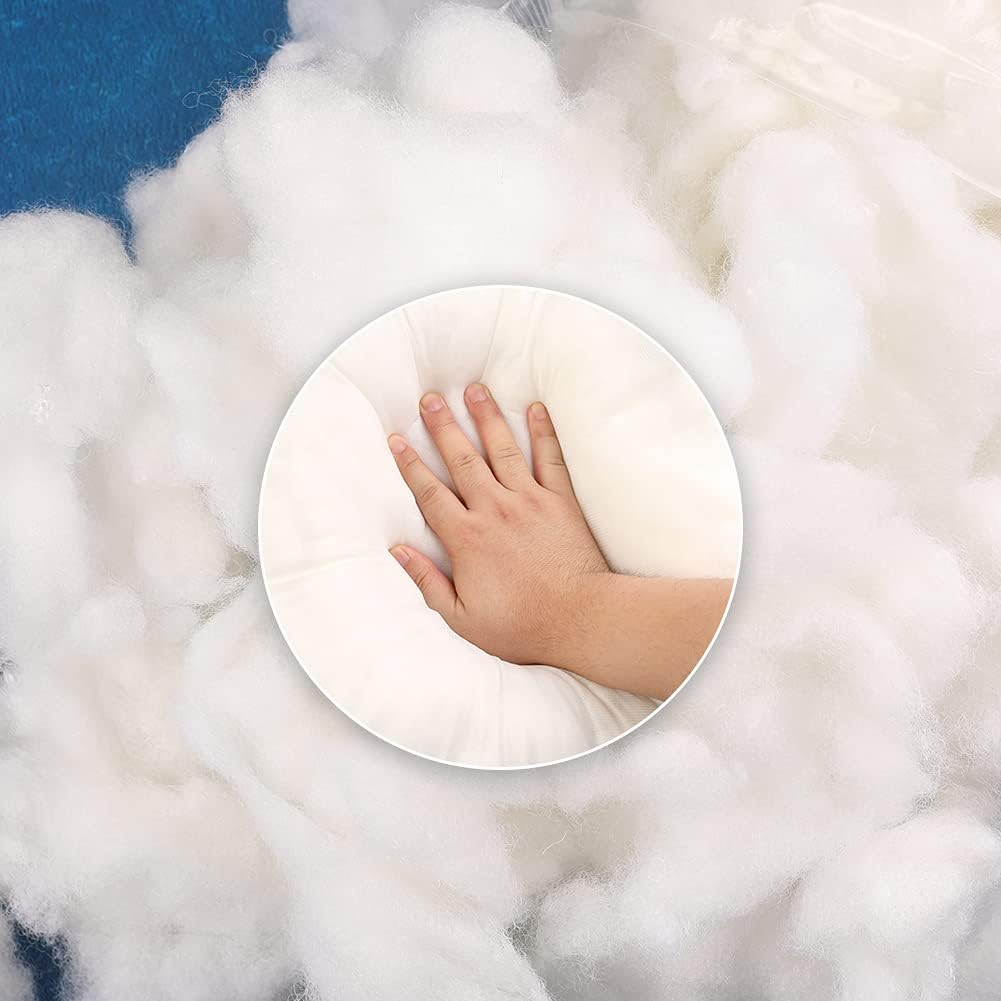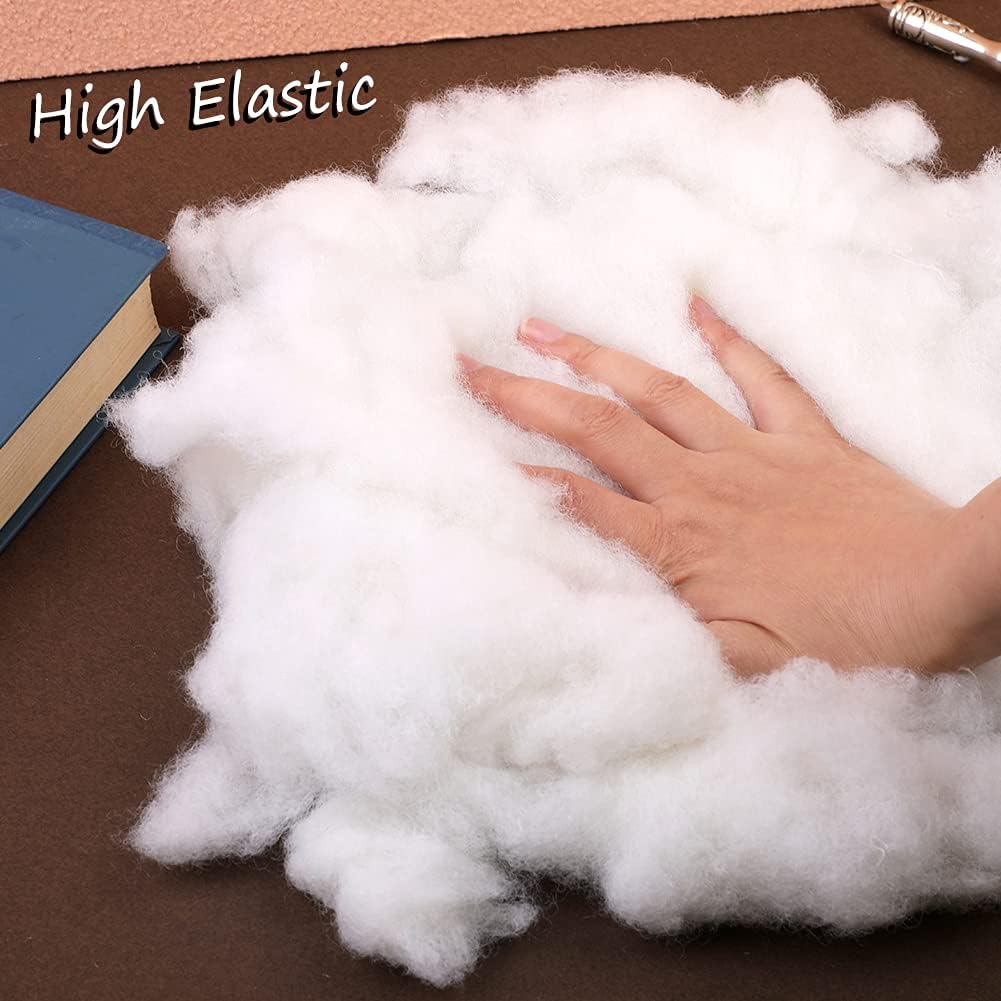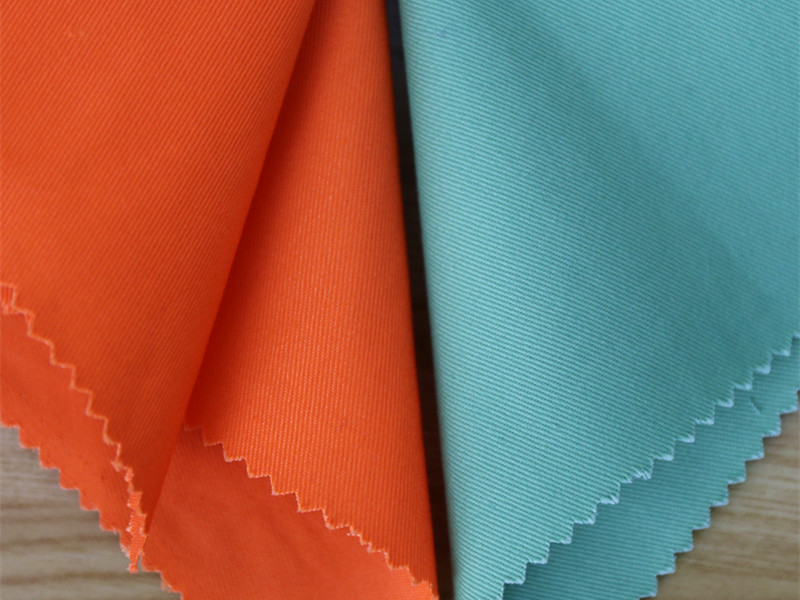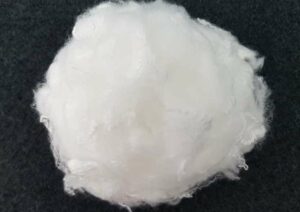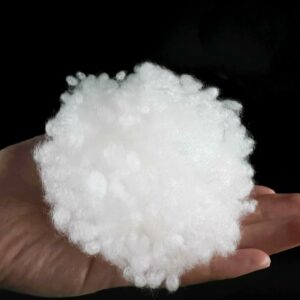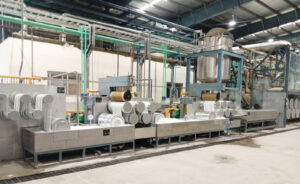What is Polyester Fiber?
Polyester fiber was originally developed for mass consumption by the DuPont Corporation, which also developed other popular synthetic fibers like nylon. During World War II, the Allied powers found themselves in increased need of fibers for parachutes and other war materiel, and after the war, DuPont and other American corporations found a new consumer market for their synthetic materials in the context of the postwar economic boom.
Initially, consumers were enthusiastic about the improved durability profile of polyester compared to natural fibers, and these benefits are still valid today. In recent decades, however, the harmful environmental impact of this synthetic fiber has come to light in great detail, and the consumer stance on polyester has changed significantly.
Ethylene polyester (PET) is the most produced form of polyester fiber. The primary component of PET is petroleum-derived ethylene, and in the process of creating polyester fiber, ethylene serves as the polymer that interacts with other chemicals to create a stable fibrous compound.
History of polyester
First invented in 1941 by British chemists John Rex Whinfield and James Tennant Dickson, and becoming increasingly popular in the 1970’s, thanks to the way it was advertised as “a miracle fibre that can be worn for 68 days straight without ironing, and still look presentable,” this fabric has always had some controversy surrounding it. Thanks to those loud, shiny and…shall we say slightly plastic looking suits from the 70’s, polyester became known as a cheap and uncomfortable fabric. However, it has come a long way baby since the days of Saturday Night Fever and the Brady Bunch!
When made into polyester fabric, it can be used to create clothing, furnishings, textiles and more. If you love your clothes, you are probably already aware that if you check their labels, you can see what they are made from. If a natural fabric is mixed with polyester, then you will see the percentages of each on the label.
Types of Polyester Fiber
1.Filament: Polyester filaments are continuous fibers, and these fibers produce smooth and soft fabrics.
2.Staple: Polyester staples resemble the staples used to make cotton yarn, and like cotton staples, polyester staples are usually spun into a yarn-like material.
3.Tow: Polyester tow is like polyester filament, but in polyester tow, the filaments are loosely arranged together.
4.Fiberfill: Fiberfill consists of continuous polyester filaments, but these filaments are produced specifically to have the most possible volume to make bulky products like pillows, outerwear, and stuffing for stuffed animals.
The global demand for all types of fibers (cotton, polyester, viscose, nylon, olefin, acrylic, silk, wool) is about 100 million tons. Of this, polyester accounts for about 55 million tons, or almost 55% of all fiber demand. In the 90s, polyester’s share was about 50%. This tremendous evolution reflects polyester’s versatility, affordability, and growing spectrum of applications.
What are popular uses of polyester fiber?
Automotive (Polyester, PA 66)
- Airbags
- Tires
- Seatbelts
- Headliner
- Seat & Side panels
Personal Care (Polyester, PP)
- Diapers
- Wipes
- Feminine Hygiene Products
Home (Polyester)
- Bio-active textiles
- Interior textiles
Apparel (Polyester)
- Specialty apparel
- Protective apparel
Industrial (Polyester, PA 66, PP, PLA)
- Shale gas cracking
- Geotextiles
- Filtration
- Membranes for roofing
Other uses
- Fashion
- Sportswear
- Fleeces
- Coats and anoraks
- Bedding such as sheets, duvet covers and sleeping bags
- Footwear
- Fillings for duvets (due to its insulating properties)
- Sewing threads
- Soft furnishings and upholstery
- Textiles
- Luggage and other bags
Polyester Fiber is used for Cushion Fillings
The fiber that is used in cushion filling is fiberfill as it is bulky and with that it is soft as well. Although over time it tends to go a little flat so you will need to plump up your cushions to make sure they look full this will introduce air in between the fibers and make them fill out.
It is a synthetic version of down and feathers, with qualities such as being warm, washable, and naturally stain resistant. One of the main advantages of this over down and feathers is that it is non allergenic so is used widely and is suitable for nearly everyone. Many pillows and bedding is now available with this fiber in place of feathers due to it versatility.
This is sold in bags and its main use is as toy filling. Some shopping outlets such as craft or sewing shops would have this in stock.
If you wanted to make your own cushion pads then this type of filling would be ideal as it is adaptable to a variety of shapes and sizes. From the smallest cushion to relatively large ones depending on their use. It is excellent if you need it to be pliable and to use when bending.
This filling is also available when buying premade cushion pads.
These fibers can be woven to make a fabric such as wadding that is used in quilting and sometimes as a filling for cushions as well. A cushion pad could be made with a wadding cover and polyester fiber inside for extra softness.
What Is Polyester Fabric?
Polyester is a synthetic fabric that’s usually derived from petroleum. This fabric is one of the world’s most popular textiles, and it is used in thousands of different consumer and industrial applications. Specifically,
For Apparel (Shirts, Pants, Eveningwear, Suits, Jackets, socks, underwear),
For Homeware (Used in bath towel, kitchen towels, face towel, blankets rugs, upholstery curtains, cushioning for chairs, sofas and pillows
For Industrial Applications (Used in LCD displays, holographic film, boats, tarps and bottles)
Chemically, polyester is a polymer primarily composed of compounds within the ester functional group. Most synthetic and some plant-based polyester fibers are made from ethylene, which is a constituent of petroleum that can also be derived from other sources. While some forms of polyester are biodegradable, most of them are not, and polyester production and use contribute to pollution around the world.
In some applications, polyester may be the sole constituent of apparel products, but it’s more common for polyester to be blended with cotton or another natural fiber. Use of polyester in apparel reduces production costs, but it also decreases the comfortability of apparel.
When blended with cotton, polyester improves the shrinkage, durability, and wrinkling profile of this widely produced natural fiber. Polyester fabric is highly resistant to environmental conditions, which makes it ideal for long-term use in outdoor applications.
The fabric we now know as polyester began its climb toward its current critical role in the contemporary economy in 1926 as Terylene, which was first synthesized by W.H. Carothers in the UK. Throughout the 1930s and 1940s, British scientists continued to develop better forms of ethylene fabric, and these efforts eventually garnered the interest of American investors and innovators.
Nonetheless, polyester remains one of the most widely produced fabrics in the world, and it’s hard to find consumer apparel that doesn’t contain at least some percentage of polyester fiber. Apparel that contains polyester, however, will melt in extreme heat, while most natural fibers char. Molten fibers can cause irreversible bodily damage.
What is Recycled Polyester Fabric?
Recycled polyester fabric, also known as rPET, is a synthetic material made from plastic waste that is recycled from PET bottles, bags, containers, etc. It is eco-friendly, affordable, and durable, with the same properties as virgin polyester. It has many applications in clothing, especially for activewear and sports apparel, as well as in industrial products such as car tires, ropes, and conveyer belts. Recycled polyester fabric reduces the environmental impact of plastic pollution and saves energy and water compared to virgin polyester production
Recycled polyester staple fiber refers to the use of polyester fabric, waste polyester bottle flakes, spinning waste, foam material, pulp block as raw materials, waste bottle flakes are crushed and cleaned, and the mixture of various materials is dried, melted and extruded.
Advantages
- The use of recycled polyester can effectively reduce the amount of petroleum The
data shows that each ton of recycled polyester yarn can save 1 ton of oil and 6 tons of water.
- It can reduce CO₂ emissions, recycle and reuse resources, and reduce environmental Recycling a 1-liter plastic bottle can reduce CO ₂ emissions by 0.042 kgs, and for every 20 plastic bottles recycled, which can be processed into a summer T-shirt.
Spun polyester
Spun polyester is a woven or knitted polyester fabric with a soft feel, as it is made with fibers which are softened by agitation. It is a nice comfortable dressmaking fabric. It is also durable.
Polyester fabric – blends
Polyester yarns are woven or knitted as they are or combined with other fibers forming blended fabrics. Cotton, linen, ramie, rayon and wool fibers are blended this way.
These blended fabrics have qualities that belong to the extra fibers combined with the properties of polyester fibers. When blended with cotton the fabric takes on qualities like wrinkle-resistance and low shrinkage and breathability to a degree. But the bad qualities may also be inherited like a tendency to melt with high heat and a bad case of pilling.
Velvet is a cotton/polyester blend fabric and it is one of the most used fabric for making clothes and upholstery. Broadcloth is a blend of cotton and polyester and it is very popular as a dressmaking fabric. Rayon and polyester blends (Rayon challis) are great as dressmaking fabric as they are very soft and drapey. Polyester/spandex blend is used to make fitting figure-hugging clothes
Many polyester fabrics are woven or treated with fabric finishes that make them look like natural fabrics- this fabric may look like raw silk but is really polyester. Plisse is a cotton-polyester blend with a wrinkled look. There is a polyester-cotton fabric which looks a lot like linen
What are some characteristics of polyester fabric?
- Polyester is very durable and is resistant to many chemicals
- This is a popular fabric in the fashion industry, as it is resistant to shrining and stretching. It is also resistant to wrinkling and abrasions
- The fibres used to create Polyester are very strong yet lightweight
- The fibres are easily dyed
- It retains its shape very well
- Polyester fabric is easy to look after and it can be washed and dried at home
- It is a quick drying fabric, so a popular choice for outdoors clothing
How is polyester fiber and polyester fabric made?
The process of creating polyester fiber begins with reacting ethylene glycol with dimethyl terephthalate at high heat. This reaction results in a monomer, which is then reacted with dimethyl terephthalate again to create a polymer.
This molten polyester polymer is extruded from the reaction chamber in long strips, and these strips are allowed to cool and dry, and then they are broken apart into small pieces. The resulting chips are then melted again to create a honey-like substance, which is extruded through a spinneret to create fibers.
Depending on whether filaments, staple, tow, or fiberfill fibers are desired, the resulting polyester filaments may be cut or reacted with various chemicals to achieve the correct result. In most applications, polyester fibers are spun into yarn before they are dyed or subjected to other post-production processes.
Why choose polyester?
It is such a popular choice for apparel because polyester fibres are thermoplastic, or heat-sensitive. This means that fabrics, which are 100% polyester, can be given permanent pleats and decorative shapes and patterns can be laser-cut into them. They are also highly stain-resistant, so great for cleaning.
You might notice that when a garment is 100% polyester, that is it prone to static build up. This is a nightmare when it comes to ensuring your hair looks good, and you might find yourself being able to give people static shocks – which, although harmless, can be pretty annoying! To eliminate this issue, polyester is often blended with more stable fibres, such as cotton. This is then known as polycotton and it embodies the benefits of both fabrics; strong, durable, wrinkle resistant and far more breathable than 100% polyester.
Polyester clothing tends to be slippery and almost silky to touch and the fibres can be woven or knitted to create the fabric, although knitted maximises its flexibility. It is a naturally bright fibre and can be modified easily for different uses.
Is polyester fabric toxic and harmful?
Polyester is a synthetic material which has many toxic chemicals embedded in it. Synthetic materials such as acrylic, nylon, and polyester are made from chemicals such as thermoplastic, which outgas plastic molecules whenever they are heated.
Polyester fabric releases chemicals like phthalates into the air and through contact with the skin. These chemicals have been shown to cause hormone disruption and health issues. Aside from the harmful chemicals that polyester releases, this fabric also poses some more direct health concerns.
READ MORE: What is Polyester Fabric?

